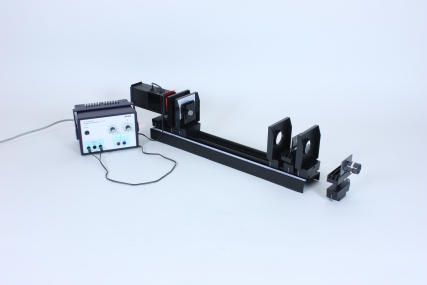Principle
Light waves which are superposed on each other can only interfere if they are also coherent. The requirement which must be fulfilled in order to bring about coherence can be represented as follows: d⋅sin(ε)≪λ or d⋅D/a≪λ.
Hence, coherence is dependent on the spatial dimension (i.e. the experiment width d of the Iight aperture) and on the utilized angle of reflection (of the triple slit). Since the dimensions of the diffraction object (triple slit) are small by comparison with the distance a of the light source from the diffraction object, it is true that sin(ε)/2=tan(ε)/2=ε/2 =(D/2)/a. This means that students can make a note of the coherence requirement in the form given above. To verify this formula, d, D and a must be measured. The object of the first experiment is to verify the coherence requirement for red light.
In the second experiment the students should find proof that, when the magnitude of the Iight source remains constant, long-wave Iight is more likely to fulfill the coherence requirement than short-wave light.
Benefits
- Multifunctional light box - All-in-one: Can be used for geometric optics on the table, colour mixing and on an optical bench
- Extension with others sets at anytime, no additional light sources needed, recognition value for students
Tasks
- When red Iight is diffracted from a triple slit, investigate the critical width d of the Iight aperture at which secondary interference maxima just occur or disappear.
- After that, find out whether green or blue light is brought to interference at the established aperture width d.


